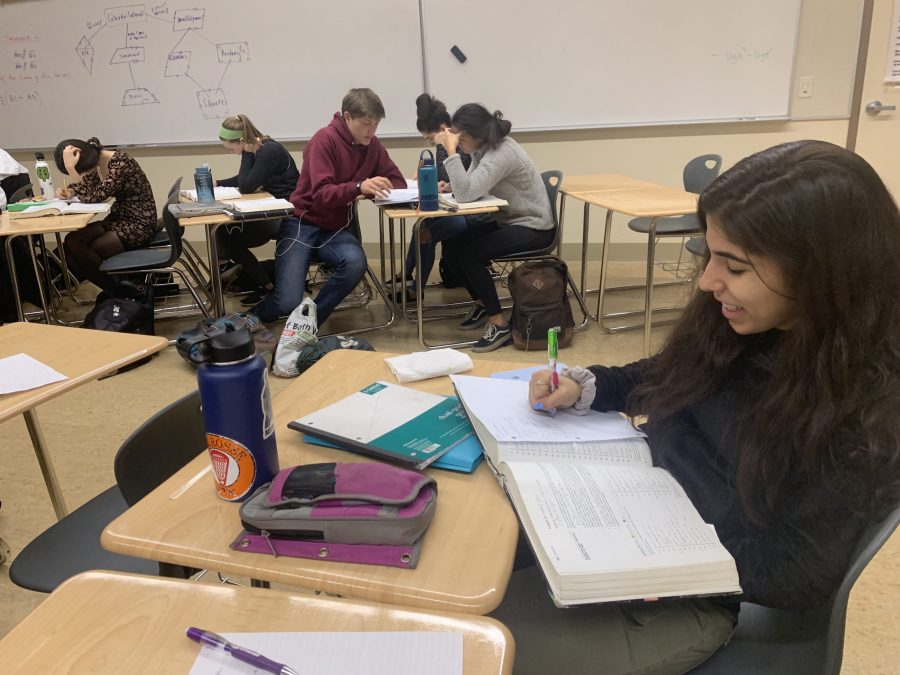PAUSD has decided to eliminate separate math lanes for seventh and eighth grade students, a proposal that raises concerns among some Palo Alto students. Although details about the specific rigor of the classes are still being discussed, the District intends to nudge all students into a single lane that would prepare them to start high school in a geometry course.
The newly suggested curriculum change poses several questions regarding skill and stress among middle and high school students in PAUSD.
“The new system doesn’t allow students who excel in math to be challenged, and it puts kids who are already struggling in math at an even bigger disadvantage,” freshman Rachel North said.
Supt. Don Austin proposed the math lane collapse in October, addressing some parent concerns about their students being unable to reach their full potential in math.
To prepare, math teachers in PAUSD middle schools are attending training throughout the rest of the spring semester to ease into the new course requirement.
According to Greene Middle School algebra teacher Josh Spira, the middle school math teachers will create a transition in the next school year for sixth graders to funnel into one lane for seventh grade instead of the customary two-laned curriculum, accelerated versus non-accelerated, that is currently in place. Through this new curriculum, all students will take Algebra 1A as eighth graders and enroll in a geometry class as freshmen.
Paly sophomore Brighid Baker brings up issues with mental health related to academic stress, especially for students who struggle with math and might not be ready for geometry.
“I don’t think it’s feasible because there are some people who are better at math and some people who are weaker in the subject,” Baker said. “If you’re taking other hard classes and it’s already too much stress, some people will have lower self esteem and lower confidence if they are in a lane they don’t necessarily belong in.”
The Math Steering Committee and the Instructional Leads plan on having a three-year transition period to take out a lane. With this approach, every seventh grader would take a class called Math 7, and Math 7A would cease to exist, according to Spira.
“From what I can tell, they’re getting rid of the lower lane but (the new course) will undoubtedly change because the range of students will increase,” Spira said.
The District is splitting three years of middle school math into two years, according to Paly Student Board Representative Ben Gordon, who was in attendance at the meeting in October.
“The sixth grade course is the entire curriculum for sixth grade plus the first semester of curriculum for seventh grade,” Gordon said. “When you transition into seventh grade, you’re taking the second semester of seventh grade curriculum and then the entire eighth grade curriculum.”
The reconstruction is aimed towards preparing all middle school students for geometry during their freshman year in high school without inhibiting student potential early on.
“We just didn’t have enough students graduating with the requirements to attend UCs or CSUs,” Gordon said. “It really does streamline the process. It takes out the complications between having different age groups in different classes, and ideally, it puts every student in a geometry class upon entering high school with enough time to graduate.”
Senior Sanaz Ebrahimi, who was in the standard math lane in middle school, wanted to advance and so took the geometry bridge course over the summer of her freshman year at Paly. She is currently enrolled in AP Calculus AB.
“If they made everyone start in geometry, some kids would have a really hard time succeeding in their freshman math class,” Ebrahimi said. “I know I wouldn’t have survived in geometry as a freshman because I, like some kids, just needed more time to understand algebra and have a stronger foundation for higher math.”
The proposal in question stemmed from community input — community members attended school board meetings and voiced their concerns with the math program.
“Some parents think that when you have lanes at such a young age, you can close doors to people that could otherwise excel in math if they’re stuck in the lower lane,” Spira said. “You might call it an equity issue.”
Analogous to any other issues brought to the board, Palo Alto parents’ and students’ opinions lie on either side of the topic.
“You have parents on both ends of the scale: some say their kid is not challenged enough, others say their kid is being shut off because they’re put in a lane and getting stuck there,” Spira said.
The MSC is developing strategies to fine-tune the transition and as of now, the process is a work in progress, according to Spira.
Gordon said, “I love seeing the district accelerating students and putting every student in line to graduate on time in high school.”









